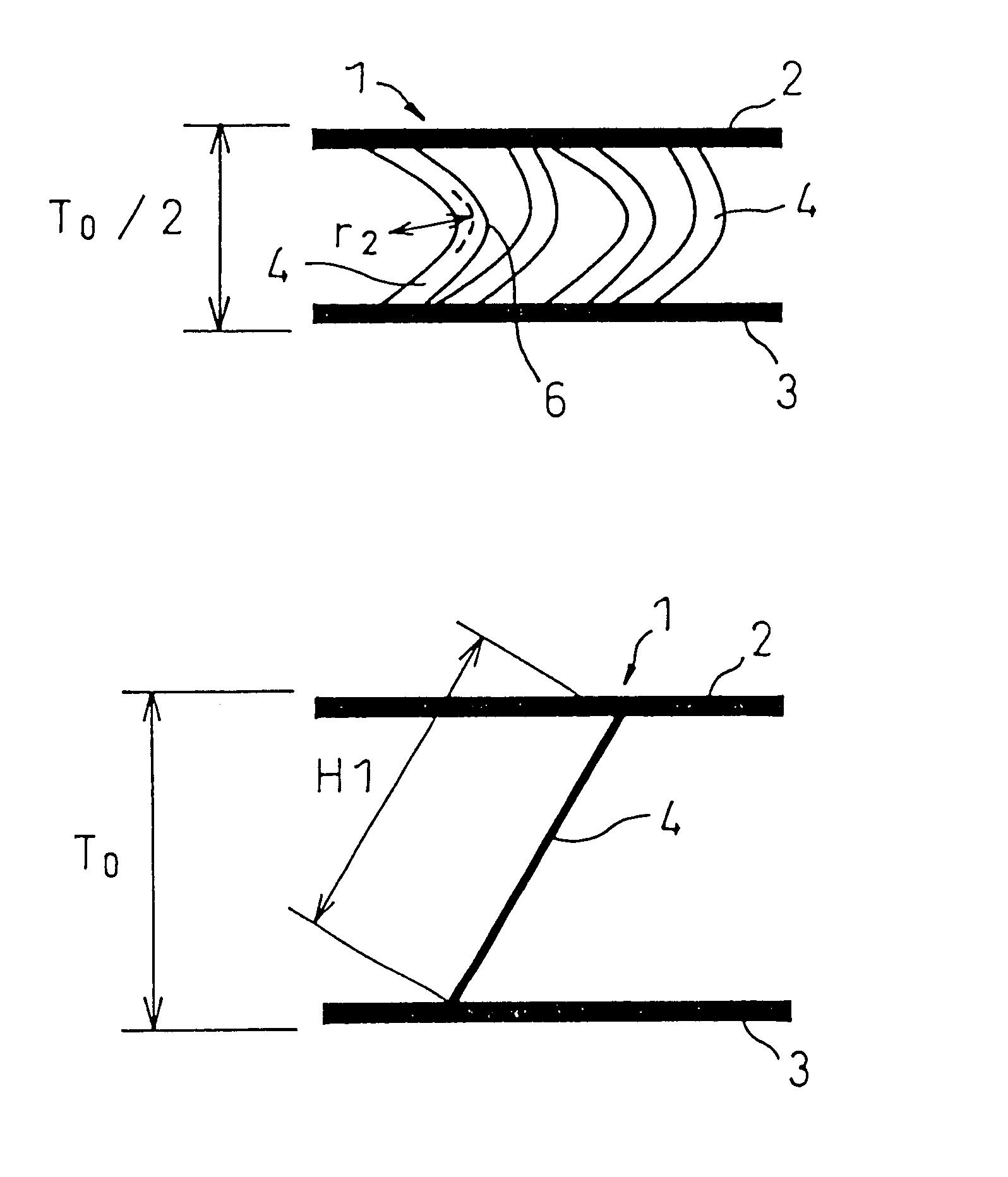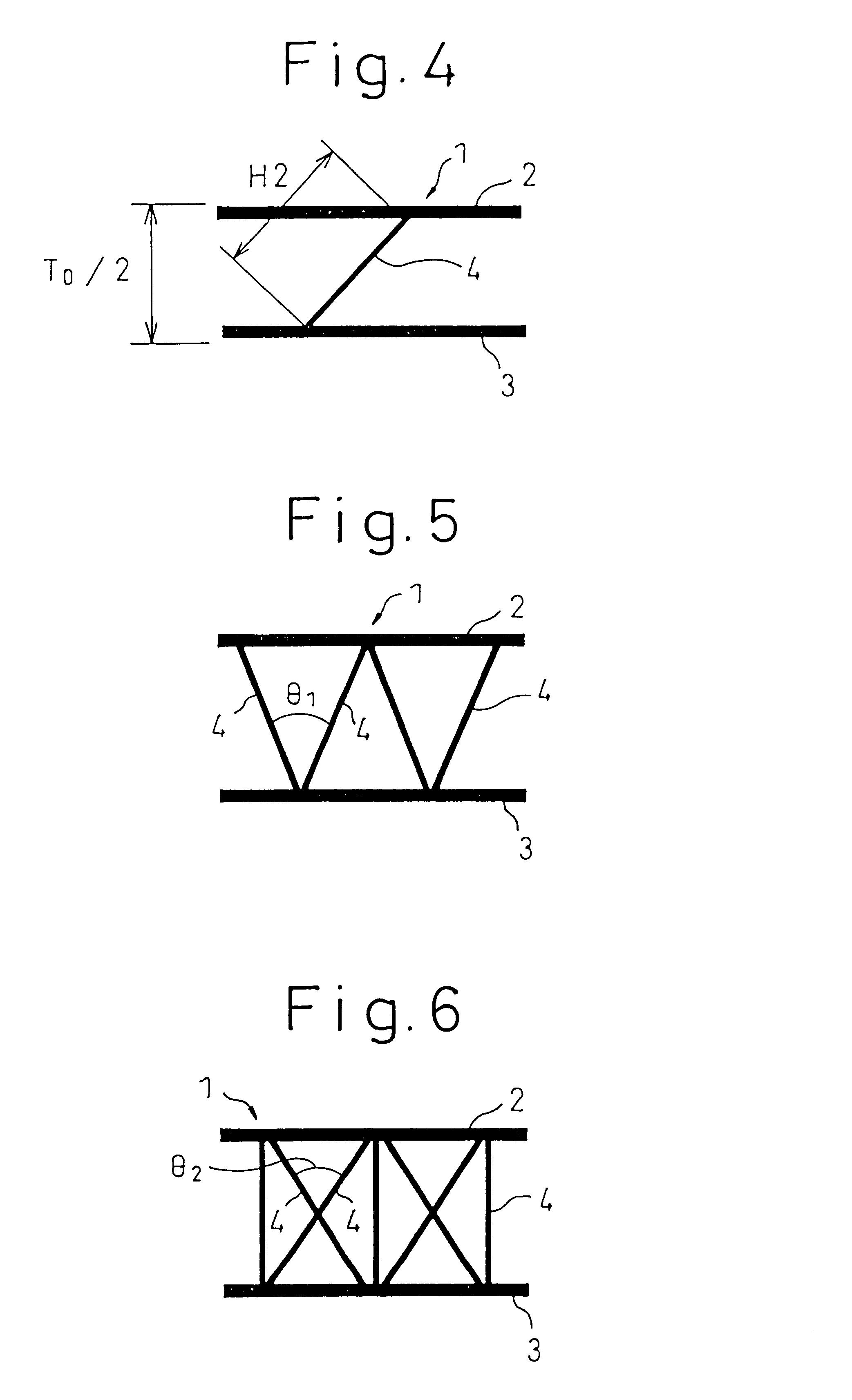Three-dimensional fabric for seat
a three-dimensional fabric and seat technology, applied in the field of three-dimensional fabric for seats, can solve the problems of poor elastic feeling, reduced fabric thickness, and lack of elastic cushioning property, and achieve the effects of minimizing hysteresis loss and residual strain, favorable cushioning property, and improving shape retention property
- Summary
- Abstract
- Description
- Claims
- Application Information
AI Technical Summary
Benefits of technology
Problems solved by technology
Method used
Image
Examples
example 2
The polytrimethylene terephthalate monofilaments of 280 dtex prepared as described in the above-mentioned REFERENCE were continuously heat-treated in a relaxed state by dry heat at 160.degree. C. while further being overfed at a ratio of 3%. The resultant polytrimethylene terephthalate monofilament had a hysteresis loss during bending recovery of 0.002 cN.multidot.cm / yarn.
A three-dimensional knit fabric was obtained in the same manner as in Example 1, except that the monofilaments are supplied from the guide bar L4 for forming the connecting yarn. Physical properties thereof are shown in Table 1.
example 3
A grey fabric was obtained in the same manner as in Example 1, except that polyethylene terephthalate false-twist textured yarns of 167 dtex / 48 filaments (manufactured by ASAHI KASEI K.K., cheese-dyed in black color) were supplied from three guide bars (L1, L2 and L3) for knitting a front knit layer, while polyethylene terephthalate false-twist textured yarns of 334 dtex / 96 filaments (each of which is a two-plied yarn of polyethylene terephthalate false-twist textured yarn of 167 dtex / 48 filaments manufactured by ASAHI KASEI K.K., cheese-dyed in black color) were supplied from two guide bars (L5 and L6) for knitting a back knit layer, and was dry heat-set while stretch the a width by 12% at 150.degree. C. for 2 minutes to obtain a three-dimensional knit fabric having various physical properties as shown in Table 1.
example 4
A polybutylene terephthalate monofilament of 280 dtex (manufactured by ASAHI KASEI K.K.) was continuously heat-treated in a relaxed state as in Example 2, and a monofilament yarn having a hysteresis loss during bending recovery of 0.025 cN.multidot.cm / yarn was obtained.
A three-dimensional knit fabric was obtained by supplying this monofilament yarn from a guide bar L4 for forming the connecting yarn, which fabric has various physical properties as shown in Table 1.
PUM
| Property | Measurement | Unit |
|---|---|---|
| bending elongation | aaaaa | aaaaa |
| bending elongation | aaaaa | aaaaa |
| elongation | aaaaa | aaaaa |
Abstract
Description
Claims
Application Information
 Login to View More
Login to View More - R&D
- Intellectual Property
- Life Sciences
- Materials
- Tech Scout
- Unparalleled Data Quality
- Higher Quality Content
- 60% Fewer Hallucinations
Browse by: Latest US Patents, China's latest patents, Technical Efficacy Thesaurus, Application Domain, Technology Topic, Popular Technical Reports.
© 2025 PatSnap. All rights reserved.Legal|Privacy policy|Modern Slavery Act Transparency Statement|Sitemap|About US| Contact US: help@patsnap.com



